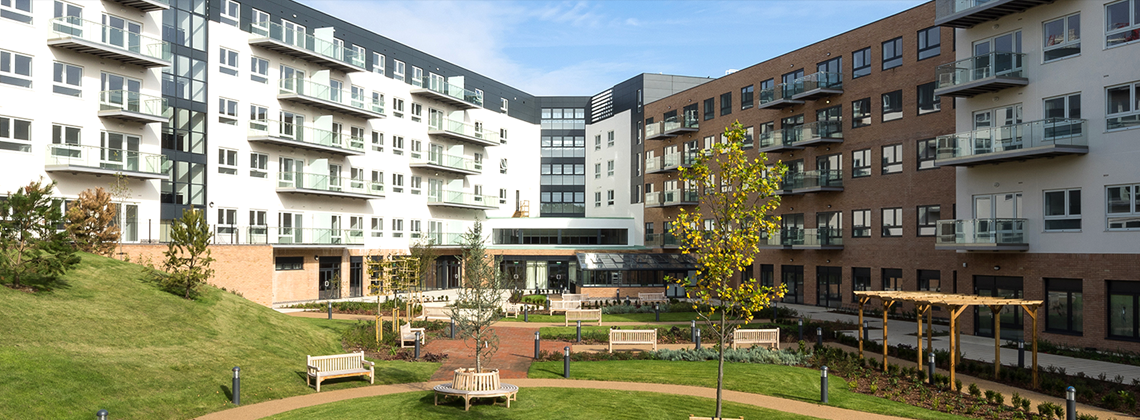The UK is getting older
The UK has a rapidly ageing population – a growing demographic that will only put further pressure on our already desperate housing crisis. It is projected that, by 2039, the number of people aged 75 and over will double from 5 million to nearly 10 million.
Over recent years, the Government has focused policymaking on specific reforms to help younger people get onto the housing ladder; or, in some cases, they have actively abandoned any progressive housing reform at all. Schemes such as the Help to Buy ISA and Help to Buy Equity Loan threw a lifeline at those first-time buyers looking to get their foot on the housing ladder amidst a backdrop of austerity and a squeeze on the public purse. However, in this focus, the Conservatives have failed to properly address the vulnerable, rapidly ageing population who are unable to pursue the specialised housing they need.
Recently we have seen the need for a better approach to older people’s housing championed within Parliament and the establishment of the Older People’s Housing Taskforce, a joint effort from the Department for Levelling Up, Housing and Communities and Department of Health and Social Care. However, with the change in Housing Minister once again and the looming General Election next year, the Taskforce is unlikely to make the necessary progress to address older people’s housing challenges. Research from the National Housing Federation (NHF) argues that we need 38,000 new homes for rent for older people each year; much more than the 8,000 we are currently achieving.
Specialised social housing for older people is an important and necessary way to ensure that older people can live in homes that suit their needs, and to address vital health concerns. To address this, the next Labour Government will need to implement a significant programme of building for older people, embedded across two key commitments made at the 2023 Labour Party Conference: Angela Rayner’s commitment to building 1.5 million new homes, and Wes Streeting and Andrew Gwynne’s 10-year plan for a National Care Service.
What can Labour do about it?
Labour have recognised the need for adapted housing and have included provisions for this within the National Policy Forum document. However, whilst this is useful, there remains a need for large-scale development that can provide the need for housing at scale and foster communities.
This is where a partnership in Birmingham may provide the outline to give Labour a big step up in achieving its ambitious home ownership target whilst pursuing a deeper social cause
An exceptional scheme
In 2004, when Birmingham City Council was looking at closing 29 care homes that had become unsustainable, they pursued an alternative programme that would address the shortage of care options whilst increasing provision for older people on middle incomes and those requiring social housing. The programme was not only aimed at meeting the needs of older people, but also those in Birmingham seeking family-sized homes, as the initiative sought to release these back into the market, including social housing underoccupied by older people.
The resulting partnership with the ExtraCare Charitable Trust saw a £200 million strategic programme to build five large scale Integrated Retirement Communities (IRCs) in Birmingham: New Oscott Village in Erdington , Pannel Croft Village in Newtown, Hagley Road Village and Bournville Gardens Village in Edgbaston (pictured) and finally Longbridge Village, completed in 2017. Homes became available for outright purchase, shared ownership purchase and affordable/social rent.
In total, the partnership resulted in a total of 1,168 units being built in five retirement villages.
Of these, 30% were for affordable/social rent, freeing up 342 units of social housing that were previously underoccupied for families requiring accommodation, providing a solution to both meet the needs of the ageing population and address the housing crisis facing younger generations.
The partnership also supported Birmingham’s diverse population. 70% of Pannel Croft’s residents are from Afro-Caribbean backgrounds, helping to facilitate a community for the older Afro-Caribbean population in Birmingham.
The subsequent health and social care benefits of the partnership, confirmed by a longitudinal study conducted by Aston University, resulted in savings for Birmingham City Council in social care costs, savings for the local NHS in Birmingham and savings for older people living in these IRCs – highlighting how increasing such partnerships can address both the housing and care challenges of an ageing population. The partnership also helped the Council to reach its own Health and Well-Being Board targets, with a 38% overall reduction in NHS costs and a 46% reduction in routine and regular GP visits for those living in the IRCs. Replicating this partnership across councils nationwide would tie in perfectly with Labour’s aims for both large-scale housebuilding and a National Care Service.
What next?
This example also demonstrates the wide-ranging socio-economic benefits that the building of social and affordable housing brings. By rolling out this partnership on a larger scale, Labour can facilitate a cyclical housing market where all older people who wish to downsize and move into accommodation such as IRCs can do so, and younger people and families can access family-sized homes. The role of IRCs in Labour’s National Care Service was noted in the Fabian Society’s recent report on this topic, which noted that “a major expansion of housing-with-care and supported living schemes” should be a “high priority”, recognising that “the UK has far less specialist housing for older people than many comparable countries, and what is available often does not provide sufficient support to prevent care home admissions when people’s needs grow more complex”. To remedy this, Labour should mandate that all local authorities have an older people’s housing plan which specifically mandates for provision of specialist housing and care for elderly.
Going further, Labour have recognised the urgent need to release parts of our greenbelt for development. Labour should aim to strategically release large parcels of land in conjunction with local councils, specialist housing providers and developers to develop these sites. In areas around cities, this could involve greenbelt land, allowing residents within cities to downsize and release valuable housing stock within urban centres. By pursuing this, Labour would be bringing more homes back into the market, helping a vulnerable demographic and providing solutions to both councils’ rising social care costs and our ever-growing housing crisis.
Joshua Lee works as a Senior Researcher for Henham Strategy where he specialises in housing and planning policy.
Sarina Kiayani is Policy and External Affairs Manager at ARCO and sits on the Fabian Society Executive Committee.


